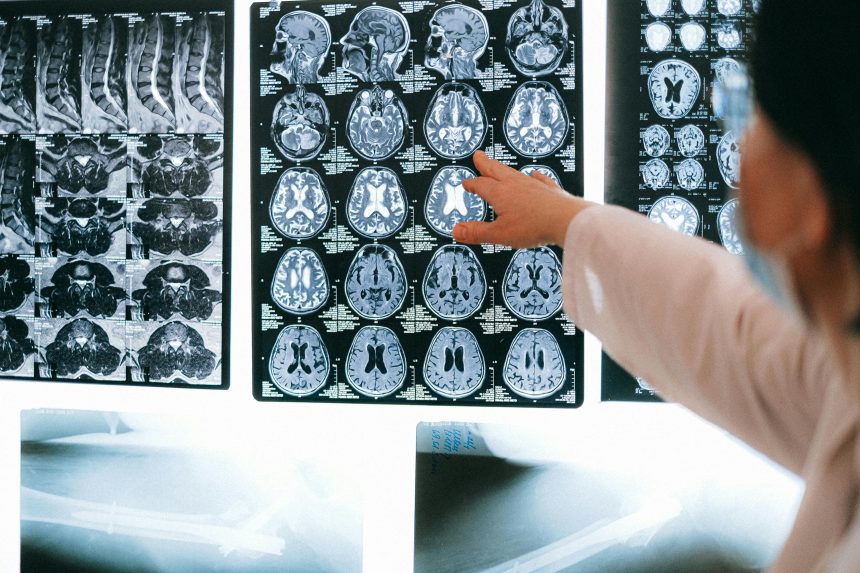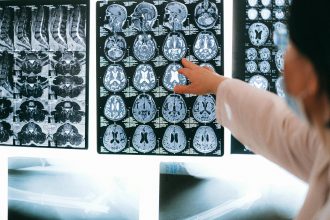A closed head injury can be one of the most deceptive forms of brain trauma. On the outside, there may be no visible wound, no bleeding, and no fracture — yet inside the skull, the brain may have endured a violent collision against bone.
- What Is a Closed Head Injury?
- How a Closed Head Injury Happens
- Types of Damage Seen in Closed Head Injury
- Symptoms of a Closed Head Injury
- Diagnosis and Medical Evaluation
- Treatment and Early Management
- Rehabilitation and Long-Term Recovery
- Prognosis and Possible Complications
- Prevention: Protecting the Brain from Hidden Trauma
- The Takeaway
This type of injury accounts for the majority of traumatic brain injuries worldwide. Understanding how it occurs, what symptoms to watch for, and how recovery unfolds helps families and clinicians recognize that even “invisible” injuries can have life-changing effects.
What Is a Closed Head Injury?
A closed head injury occurs when the brain is damaged without any object penetrating the skull. The skull remains intact, but the brain moves rapidly within it due to an external force — such as a blow, fall, or sudden acceleration and deceleration.
Unlike an open or penetrating injury, where damage is localized to a specific area, a closed head injury often causes diffuse damage, meaning multiple regions of the brain are affected at once.
Common examples include:
- Concussions (mild closed head injuries)
- Diffuse axonal injuries (shearing of nerve fibers)
- Contusions and intracranial hemorrhages (bruising or bleeding inside the skull)
How a Closed Head Injury Happens
The human brain is soft, roughly the texture of gelatin, and floats in cerebrospinal fluid. When the head is struck or suddenly stops moving, the brain keeps moving — striking the inner surface of the skull.
This can cause two types of injury:
- Coup injury: Damage at the site of impact.
- Contrecoup injury: Damage on the opposite side, caused when the brain rebounds within the skull.
Such rapid back-and-forth motion can stretch, twist, and tear nerve fibers, disrupt blood vessels, and lead to swelling or bleeding.
Common Causes
- Falls (the leading cause in older adults and children)
- Motor vehicle collisions
- Sports injuries and physical altercations
- Shaken baby syndrome in infants
- Blast injuries in military personnel
Even without visible trauma, these forces can lead to significant cognitive, emotional, and physical changes.
Types of Damage Seen in Closed Head Injury
Closed head injuries can affect the brain in several ways — sometimes simultaneously:
1. Concussion
A mild form of closed head injury that temporarily disrupts brain function. Most people recover fully, but repeated concussions can cause cumulative damage.
2. Contusion
A bruise on the brain’s surface caused by direct impact. Contusions may bleed or swell, compressing nearby tissue.
3. Diffuse Axonal Injury
Caused by rotational or shearing forces that damage nerve fibers throughout the brain. This often leads to loss of consciousness or coma.
4. Intracranial Hemorrhage
Bleeding inside the skull, such as subdural or epidural hematomas, can increase pressure on the brain and require emergency surgery.
These types may overlap, making accurate diagnosis essential.
Symptoms of a Closed Head Injury
Symptoms depend on which brain areas are affected and the severity of damage. They may appear immediately or develop gradually over hours or days.
Mild Injuries
- Headache, dizziness, or nausea
- Fatigue and confusion
- Blurred vision or sensitivity to light
- Short-term memory loss
- Mood swings or irritability
- Trouble concentrating or sleeping
Moderate to Severe Injuries
- Loss of consciousness (minutes to hours)
- Persistent vomiting or seizures
- Unequal pupil size
- Slurred speech
- Weakness or numbness in limbs
- Difficulty recognizing people or surroundings
- Coma or unresponsiveness
Because some symptoms emerge slowly, any head injury should be evaluated by a healthcare professional, even if the person appears “fine” after the event.
Diagnosis and Medical Evaluation
Diagnosing a closed head injury begins with a neurological exam to assess alertness, reflexes, and pupil reactions. Clinicians may use the Glasgow Coma Scale (GCS) to measure severity based on eye, verbal, and motor responses.
Imaging Studies
- CT Scan: The first-line tool in emergencies to detect bleeding, swelling, or fractures.
- MRI: Provides detailed images of soft tissue and can detect diffuse axonal injuries not visible on CT.
- Functional imaging (DTI or fMRI): Used in research and advanced clinical settings to assess neural pathway damage.
Sometimes, symptoms may not align perfectly with imaging findings — highlighting that brain injury is both structural and functional.
Treatment and Early Management
Treatment depends on the injury’s severity but generally follows three main goals:
- Stabilize the patient (airway, breathing, circulation)
- Prevent secondary injury (swelling, low oxygen, low blood pressure)
- Support recovery and rehabilitation
Mild Cases
Patients may be observed for several hours or days. Rest and gradual return to normal activity are recommended.
Moderate to Severe Cases
Hospitalization or intensive care may be needed to control swelling and prevent complications. Interventions may include:
- Intravenous fluids and oxygen therapy
- Medications to reduce intracranial pressure
- Surgery to relieve bleeding or remove clots
- Seizure prevention medications
Rehabilitation and Long-Term Recovery
Once the acute phase passes, recovery continues through comprehensive rehabilitation programs.
Key Therapies Include:
- Physical therapy: To restore strength, balance, and coordination.
- Occupational therapy: To regain independence in daily tasks.
- Speech and language therapy: For communication or swallowing difficulties.
- Cognitive rehabilitation: To rebuild attention, memory, and problem-solving skills.
- Psychological support: For mood disorders, anxiety, or behavioral changes.
Family involvement and structured routines significantly enhance recovery. Even subtle symptoms—like fatigue or sensory overload—deserve attention to prevent setbacks.
Prognosis and Possible Complications
Recovery from a closed head injury varies widely.
- Mild injuries: Most people recover within weeks, though some experience lingering headaches or concentration problems.
- Moderate injuries: May cause lasting cognitive or physical changes requiring long-term therapy.
- Severe injuries: Can result in permanent disability, coma, or death.
Complications may include chronic headaches, memory deficits, seizures, depression, or post-concussion syndrome. Early rehabilitation and consistent follow-up improve outcomes.
Prevention: Protecting the Brain from Hidden Trauma
While not all accidents can be prevented, many closed head injuries are avoidable with simple precautions:
- Wear seat belts and helmets during sports or biking.
- Fall-proof homes for children and older adults.
- Follow workplace safety rules in hazardous environments.
- Recognize and report concussions early to avoid cumulative effects.
Education and early action remain the best defense against preventable brain injuries.
The Takeaway
A closed head injury can look deceptively minor but have lasting effects. The absence of a fracture doesn’t mean the absence of damage — what happens inside the skull can be just as dangerous.
With prompt diagnosis, skilled care, and persistent rehabilitation, many survivors recover independence and function. Awareness and prevention remain our most powerful tools for protecting the brain — the organ that makes us who we are.







